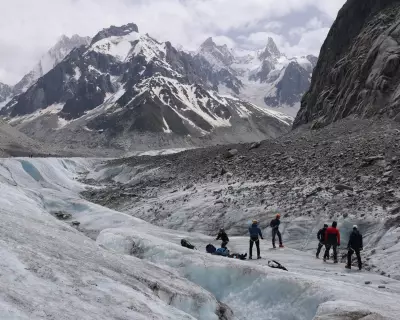
Conservation heavyweights Natural England and the National Trust have issued stark warnings about the escalating environmental catastrophe unfolding along the HS2 route through the Thames Valley. The controversial high-speed rail project is systematically dismantling protected habitats, putting countless species at risk and permanently scarring one of England's most cherished landscapes.
Ecological Carnage in Protected Zones
Recent site inspections have revealed what experts describe as "devastating" impacts on Sites of Special Scientific Interest (SSSIs) and other protected areas. The construction has already:
- Destroyed ancient woodland habitats that have stood for centuries
- Severed vital wildlife corridors used by protected species
- Compromised river systems and wetland ecosystems
- Threatened the survival of rare and endangered species
Conservation Giants Break Silence
In an unprecedented move, both Natural England and the National Trust have publicly condemned the destruction. Their statements reveal a pattern of disregard for environmental safeguards that were meant to protect these sensitive areas.
Natural England, the government's own conservation watchdog, expressed "significant concerns" about the irreversible damage to designated sites. Meanwhile, the National Trust warned that the scale of destruction threatens to undermine decades of conservation work in the region.
Thames Valley: Ground Zero for Environmental Conflict
The Thames Valley has become the epicentre of the clash between infrastructure development and environmental protection. The area's rich biodiversity and network of protected sites make it particularly vulnerable to large-scale projects like HS2.
Local conservation groups report that mitigation measures promised by HS2 Ltd have either been inadequate or implemented too late to prevent permanent damage. The situation has become so dire that some experts question whether the ecological harm can ever be fully reversed.
The Human Cost of Progress
Beyond the environmental impact, local communities face the loss of cherished natural spaces that have provided recreation, solace, and connection to nature for generations. The destruction of ancient woodlands and tranquil river valleys represents not just an ecological loss, but a cultural one too.
As the bulldozers continue their advance through the Thames Valley, conservation organisations are calling for urgent intervention. They demand better oversight, stricter enforcement of environmental conditions, and a fundamental rethink of how major infrastructure projects interact with protected landscapes.
The battle for the Thames Valley's soul continues, with the outcome likely to set precedents for how Britain balances development demands with environmental protection for decades to come.





